
The Web Takes Control
Don’t take it personally. ACA wants to control everything on the network. AV just needs to get out of the way.
Text:/ Derek Powell
AV and IT convergence? That horse has bolted. It’s happened. Fait accompli.
Much has already changed. Matrix switchers, one of the mainstays of any sizeable installation, are on the endangered species list as more and more content moves to IP transport across a converged network. Videoconferencing, once the exclusive domain of high-priced proprietary technology, is increasingly virtualised. Just add software and any PC or phone is a videoconference endpoint.
The next chapter of convergence is well under way and the next round of equipment extinctions may now be on the horizon. Will our beloved touch panels — in fact any kind of hardware control system — be next to disappear? In this article, we’ll talk to someone who’s working hard to see that languages like NetLinx and SIMPL go the way of Esperanto — fondly remembered by a few but irrelevant in today’s world. We’ll canvass the ideas of some who believe that such a future may not be so bleak and we’ll also talk to others who, surprisingly, have a foot firmly in both camps.

Jon McFarlane, co-founder (with Stephen von Takach) of ACA Projects (ACA) isn’t really a typical audiovisual type. However, he is certainly creating a lot of interest with his products now displacing traditional audiovisual systems at some serious corporations like Rabobank and PwC.
Around seven years ago, some seminal early projects at Macquarie University and CommSec resulted in Jon and Stephen developing a web-based control system now called ACA Engine and alongside that a web-based system to manage media through playlists and schedules called Cotag Media. But this was just the starting point for Jon, whose thinking goes way beyond audiovisual — and way beyond ‘controls’ as well.
“Personally, for me, it’s always been about the user experience,” Jon declares. “At the University of Sydney, I did a Masters of Design Science and my work was in areas of rethinking the user interface. It still surprises me how many projects today are focused around the touch panel, which is sitting in the room 24/7 but gets touched very rarely, and, in many cases, such little thought is put into that user interface.”
Jon’s early experiences with audiovisual systems in universities led him to ask a few very fundamental questions about how best to control meeting and teaching spaces in an environment where ‘the network’ was already ubiquitous. Why have a dedicated appliance actually in each and every meeting room when one decent-sized computer could run all the rooms in a campus while sitting in a nicely air-conditioned data centre somewhere? And why bother to put an expensive (and possibly vulnerable) touchscreen in the room when every potential user already has a perfectly serviceable touchscreen control system sitting in their pocket?
ENGINE ROOM
The ACA Engine turns the ‘traditional’ audiovisual control system, based on a room controller and a control panel in every space, on its head. The Engine is a software system that typically runs on a server in the client’s data centre. Every piece of audiovisual equipment — and all controls — must connect to it across the network, either directly or via a third-party interface (such as one of the converter boxes from Global Caché) that translate IP commands into RS-232 or simple contact closures. For every equipment type connected, a software device driver is installed on the Engine and the logic that defines how a room will operate is set up as a template in the system.
“The main difference for us is we can take that one room as a cookie-cutter and apply it 100,000 times.” Jon says. “For us doing one room is the same as doing any number of rooms because once we have the device driver in place, and once we have all the logic settings for how the room works, that can literally be applied to any number of rooms.
“Another point of difference for us, is our device drivers are open source. If we developed a device driver for an NEC display, any other integrator or partner can use our source code for that device driver. So, we get around that issue of holding the source codes to ransom and clients won’t ever struggle to get access to the source code in our projects. That was a deliberate decision based on experience we have with other hardware-based control systems that need programming. Our system doesn’t really require programming. You’re basically pulling in all the resources from our existing repositories and just changing settings to match the system design.”
BEST CONTROL IS NO CONTROLS
To Jon, the best control system has no controls at all. He describes the ACA Engine as a platform that “… connects to all the devices, communicates with them and brings everything together with logic and increasingly with artificial intelligence as well.”
He is constantly thinking ‘big picture’ and is alight with the possibilities of thinking outside of the box embodied by traditional AV buttons and touch panels. “Other types of interfaces could be absolutely anything — or no interface at all,” he explained. “Actions can be triggered from other systems in the building such as the network, which may generate control events based on people’s location. Or control could be via native apps that developers create as the user interface. The interfaces can run on traditional touch panels or be any combination of the above.”
“In the early days,” Jon continued, “I think we got pigeonholed as replacing what an AMX or a Crestron can do — just at larger scale — and that’s where universities and corporates started showing interest. In those days, we spent a lot of time trying to convince people that ACA is more than something you already do, at scale. It actually makes it easier to do new things.”
The whole ACA experience, though, is proving to be somewhat disruptive to many in the audiovisual industry. I asked Jon if it was easier to sell his systems to the IT department: “Everything I’ve been talking about isn’t a new process in IT land,” Jon opined. “But I think AV’s been a little bit slow to adopt this technology. It feels like it’s all suddenly appeared and there’s a lot of learning and adapting that needs to happen in the AV industry. And I don’t think it has anything to do with ACA. It’s going to be there with us or without us. Server-based, web-based technology, cloud-based technology is coming to the industry. It’s already here.”
IS AV REALLY ‘IN THE WAY’?
“I do have sort of an interesting relationship with the AV industry,” Jon mused. “In many ways, we find they can almost get in the way of a good solution because they come into these projects thinking of hardware and products. They’re not coming in thinking of solutions or trying to solve user experience challenges, and the smart building is full of user experience challenges.
“I think this is where the AV industry could have a really huge impact because they are so used to connecting devices to the network and controlling devices and providing the user experience. But I think there’s an opportunity there that many in the AV industry are missing. And I’m speaking from experience mostly in the Australian market. There’s exceptions to that. I mean we have a lot of great partners that we work very closely with, like Videopro, and the reason for that is they’ve really proven they can think differently and adapt quickly and they’re taking an all-in approach to software-based solutions generally.”

What do ‘traditional’ integrators make of web-based control? Following Jon’s comments, AV Asia Pacific spoke to Jason Derry and Matt Brown from Videopro, one of Queensland’s leading integrators, which has taken up Jon’s challenge and is successfully integrating ACA into large-scale projects. We started by asking what attracted Videopro to add ACA, as a potentially disruptive technology, to their product offering.
Jason Derry: We’re looking to provide the right solutions for our customers, who are becoming more and more qualified. Sometimes that will be an ACA solution, other times it will be an alternative, but our goal remains to provide the best solution for our customers, and this philosophy applies to all our technology decisions. To stay relevant in business we feel that we need to be ahead of the curve rather than being disrupted by the curve.
Matt Brown: I think the attraction is that ACA is truly an open web standard product. So, we’re not bound by manufacturers’ ideas of what they think we should have. It’s open web. It’s supportable by anyone in the web industry. IT love it because it sits on their hardware and they have control of it. It is understandable to them, and they just get it. It’s a part of their world. Anyone that thinks that web standards or the ‘internet of things’ won’t enter our industry is sticking their head in the sand. From our perspective, we have embraced it fully. Our programmers that sit and program AMX, Crestron and Extron are also web programmers. They can program in Java, in Angular JS, or in this case Ruby — whatever we need.
AV Asia Pacific: What benefits do centralised, web-based control bring?
Matt Brown: The way that AMX, Crestron, Extron and others work at the moment, each room has a central controller that sits in the room and the cloud-based or sever-based management tool, be it RMS or Fusion, is not actually doing the room control. It is really just monitoring those room controls. So, for service or maintenance or anything that needs to happen, you go to the room or connect to that in-room device. Any new code [that you write] first has to be compiled and sent to the controller, which will then need to reboot before it can take on those new settings.
With ACA, the control comes from the server, which may not necessarily be located in the same building. In one recent large-scale installation it was a cloud-based server in Amazon web services. It has network connections and talks to all the devices by Telnet or socket connection. When you make a change in any room, you connect to that server, you make the change for that room, and because it’s script based, it’s all live, so there’s no rebooting. As soon as you make the change, the change is enacted whether it is as simple as changing the input of a matrix switcher or adding an input. Because it is a live web page, the touch panel will instantly update. You don’t need to reload it. There’s no downtime for the room. And it’s actually doing the control and the remote monitoring all in the one engine.
AV Asia Pacific: Would this work for any project?
Matt Brown: It’s not one size fits all. At the moment ACA is very much an enterprise-based solution. It’s scalable, it’s modular, and it sits on normal servers. But if you were looking at a client who had two meeting rooms and that’s all they wanted, then ACA is not the right solution and we would look at a more traditional AV solution.
Jason Derry: It’s part of the continued change. I think that what we’re seeing is a broadening of the technology stack, and as it continues to broaden there’ll be new providers that will enter into our traditional market until a point where it becomes more standardised and streamlined. The current change fits with the requirements right now and it will develop into more streamlined approaches in the medium- and long-term future. I believe some of the ‘mega-companies’ (Microsoft, Cisco, Samsung and so on) will play an important part in the future of our industries. And I think that’s where the future is for us. The real key is to be able to balance the current state and future state, we need to do both, and leaning too heavily to one side can be problematic.
AV Asia Pacific: I can’t remember the last time I had a conversation with a customer or an end user where they didn’t refer to what we know as AV as IT.
Matt Brown: To this point AV/IT convergence has not been a convergence, it’s been an absolute train wreck! Just a mashed-together collection of boxes that we’re putting onto a network. Then we seem to think by putting a web interface on it, that’ll make it all right. With ACA and these new technologies, we’re starting to see a true AV/IT convergence.
Jason Derry: And you could replace the term ‘AV/IT’ simply with ‘Technology’ convergence. For example, the air-conditioning or lighting system, that’s neither AV or IT, but it is part of the broader technology set which is not traditionally in either the AV space or in the IT world.

So fully expecting a robust defence of the traditional ways, I spoke to the world’s most colourful spokesman for all things AMX (and Harman) Graham Barrett, Head of Strategic Partnerships & Innovation at AVT. Graham did defend using NetLinx control, of course, but then, as usual, he surprised me.
AV Asia Pacific: Should we be moving away from room-based hardware control systems that are the sole province of experts in AV, and give users more power to do things for themselves with open source, web-based tools?
Graham Barrett: I think the industry, generally, and some individuals within the industry, are pushing that barrow quite aggressively. In my opinion, ‘black box’, room-based hardware control systems will still be relevant for many years to come in many environments. Take Defence, for example. The potential security implications of moving to a web-hosted control system for their AV environments are huge — and the alternative of an internally-hosted solution loses some of the benefits of this approach. I’d argue that the same is true for many secure environments like some financial and legal institutions and government departments.
That said, where you’ve got very large fleets and particularly when you want to quickly deploy at scale, the centralised or hosted control systems make a huge amount of sense. In some of those very large multi-campus university or distributed corporate deployments where you’ve got lots and lots of rooms, it’s a brilliant solution. It allows you to deliver that ITIL-centric, iterative and continuous improvement approach to AV. That has been a real challenge historically where the AV is ‘bolted-in’ — where a programmer writes the code for it — and that’s your lot for the next five years because the cost to make a change on any sort of scale is huge.
So, I truly believe there is space for both approaches. Equally, I think more and more, even if you’re looking at a hardware-style solution like NetLinx for example, the tools to allow deployment and management at scale are becoming much more capable.
AV Asia Pacific: So is AMX actually doing anything like this? I know you now have a product that’s part of the SVSI range (N-Command) that can provide a network control solution.
Graham Barrett: Yes! We have a major project recently completed built on the N-Command platform. RMIT University has been one of the biggest proponents of the centralised control approach and, with Insight Systems, have just commissioned an AMX N-Command control system to deliver control of 1100+ rooms. It is centrally hosted and managed and runs on just a handful of redundant servers located in their central data centre.
PROOF OF CONCEPT THE AMX WAY
By the time you read this, you will probably have heard a lot more from avt on this project, but the short story is that RMIT and Insight Systems picked up a ‘Best Project’ award from avt at its conference this year for their work on the ground-breaking RMIT Converged AV Project, which delivered a fully-converged AV system operating on the RMIT enterprise network.
This project was designed to demonstrate the viability of fully network-delivered AV and was deployed in 18 rooms initially, across three RMIT University campuses. The strategy was about more than just network control. All video and audio was network-delivered, using AMX/SVSI N Series encoders and decoders for video transport and QSC Q-SYS server/network-based audio processing and distribution. But importantly for our discussion here, the project actually deployed sufficient centralised control horsepower using the AMX/SVSI N Command system to (theoretically) control every one of RMIT University’s 1100 AV-equipped spaces. Out in a typical classroom, you’ll find just a couple of ‘edge’ devices and the user interface.
AV Asia Pacific: So there is an AMX control system now in place that could theoretically be extended until it runs all the AV-equipped spaces at the University. What is the hardware?
Graham Barrett: Six SVSI SC-N8012 control servers operate the three campuses. Each campus is allocated a pair of servers which provide for fully redundant fail-over. The 8012 is literally just a server running SVSI’s N-Command Solution which is actually a VMware application. The software could equally run on standard IT hardware but in the AV world, manufacturers and distributors are used to selling boxes and integrators are used to deploying boxes so this is the way the product is currently offered.
AV Asia Pacific: Will N-Command actually do anything other than control SVSI switching?
Graham Barrett: Yep. It will control absolutely anything you wish. At RMIT they have a fully-customised graphical user interface running on an SVSI N-Touch touchpanel. It’s been developed to mimic the user interface of the previous generations of traditional AMX rooms. But from that touchpanel, just as if there was an AMX system in the room, they can control the screen, obviously the source switching which is all via SVSI, the projector or display, the audio system, the whole box and dice.
AV Asia Pacific: It’s not programmed in NetLinx is it?
Graham Barrett: No. It’s a PHP server programmed using JavaScript, so it’s based entirely on a ubiquitous, standards-based scripting language. All of the user interfaces are HTML5, either served to an N-Touch touchpanel or to a tablet or to any device that supports a standard HTML5 web browser.
AV Asia Pacific: Is this something an IT person could update themselves and add equipment to?
Graham Barrett: It depends how it is programmed. Certainly, at RMIT that’s the approach they chose to take. Whenever they want to add a new room based on the standard classroom configuration, they simply access a configuration database. They say ‘I’ve got another room, it’s got this model projector, it hasn’t got this device, it has got this device, go!’ That new system is spun up, literally in minutes.
EMBRACING NEW WEB CONTROL WORLD?
AV Asia Pacific: Are you able to work with other web-based control systems like ACA?
Graham Barrett: N-Command and the ACA Engine product are similar, not so much on the control front but we’re working very closely with ACA on a number of large projects now where they’re leveraging our SVSI network AV solutions for video and audio transport and switching. ACA has written a series of device drivers for SVSI devices leveraging the open API that is a common feature of just about all Harman Pro products to make the integration of SVSI into an ACA-controlled environment quick and simple. Where an end user loves ACA then we’re more than happy to work with them, the consultant or integrator on the networked AV, networked audio or any of the other components that are part of the Harman solution set.
AV Asia Pacific: Let me ask you a few fairly straight forward questions. Do you see proprietary control languages like NetLinx and SIMPL continuing?
Graham Barrett: For certain applications, yes. But those applications will become less and less. The next generation of hardware-based control (for want of a better term, black boxes in rooms) will probably be more standards based in programming and management. Even now we have tools within the AMX family to program the current AMX NetLinx platform using Java. It’s not very popular because the AV industry hasn’t necessarily seen the benefit of programming in Java when they can program in AV control-centric languages like NetLinx.
AV Asia Pacific: Do you see things like touchpanels disappearing and being replaced with apps on iPads and iPhones? Or not even apps, just web pages?
Graham Barrett: My answer to that one is two-fold: the first and simple answer is ‘yes’. The reality is that everyone carries a touchpanel in their pocket these days. I can also say that in my 20-plus years with avt and AMX, every year without fail, someone has told me that I won’t be selling touchpanels next year. And for 20-plus years touchpanels have remained a significant part of our revenue.
So, I think the reality is, a dedicated control interface, whatever that looks like in terms of hardware, will always have a place in a meeting or teaching space. Equally, the use of ubiquitous personal devices will continue to grow. But I see the two very much complementing each other, rather than one replacing the other.
JUST ANOTHER NETWORK SERVICE
As we said at the beginning, to the users, and importantly to the CIOs and the like who are increasingly the buyers of audiovisual systems — it’s all now just Information Technology. As the both the success of ACA Projects and the RMIT University example demonstrate, AV is (or can be) just another service provided by the network.
Nobody can afford to ignore the change that the migration of AV content (and now AV control) to the network has brought. There will be much more to say in these pages in times to come, but for now I’ll allow Jon McFarlane from ACA to have the final comment:
“I think the challenge for the AV sector is they’re so focused on AV in the meeting room that they’re missing out on opportunities more broadly in the building. The smarter the building gets, the more a challenge it becomes to the customer and the more opportunity there is for technology experts to come in and help guide that. I hope the AV industry can step up and meet that challenge.”

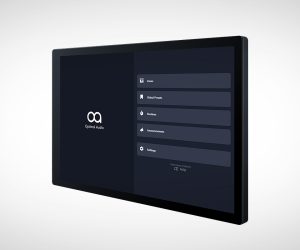

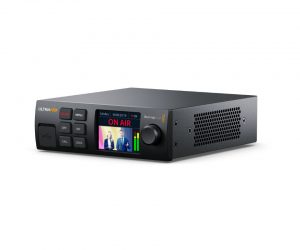
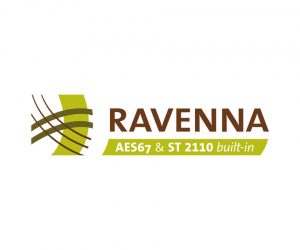

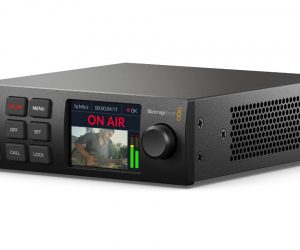


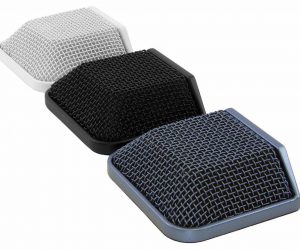

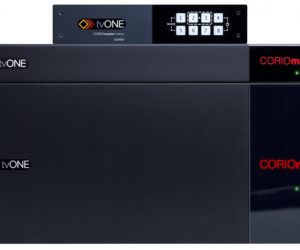



RESPONSES